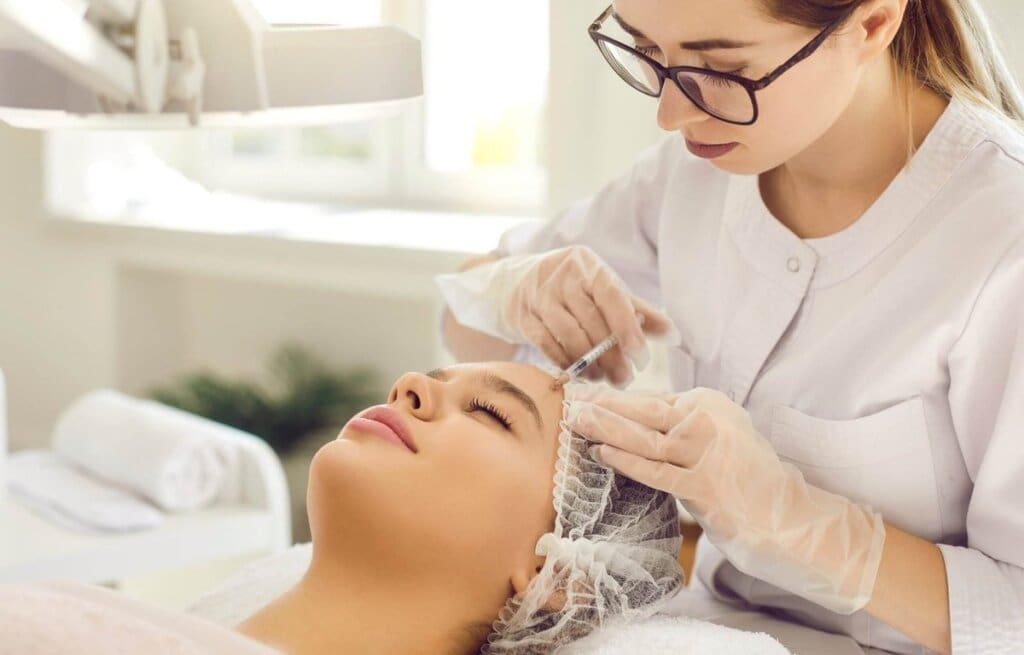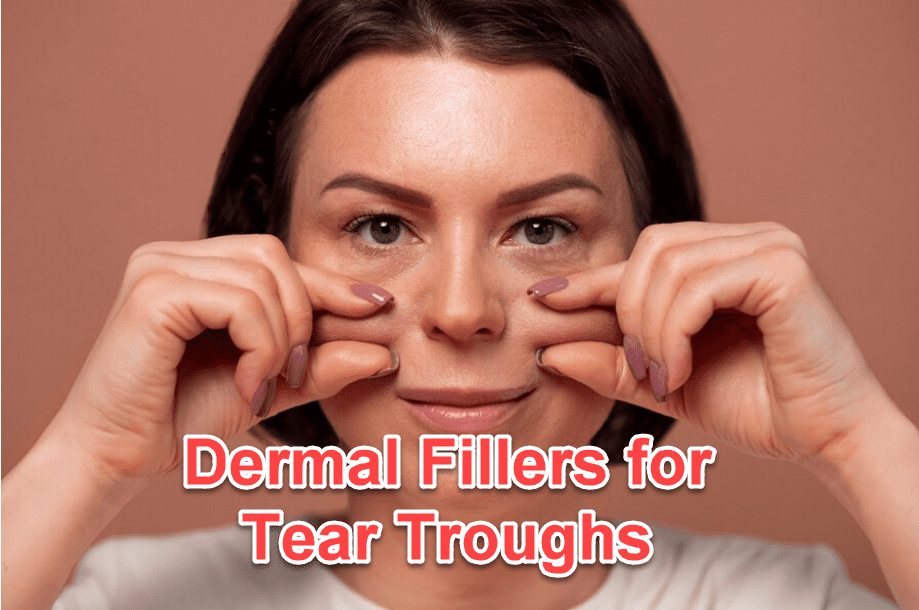When it comes to aesthetic procedures that help restore volume and fullness to the face, dermal fillers are some of the most popular options. However, with several types of fillers on the market, it can get confusing to understand the key differences between them.
One filler that stands out is Sculptra Aesthetic, which works differently than traditional fillers.
Comparison Table Between Sculptra and Other Dermal Fillers
| Feature/Aspect | Sculptra | Other Dermal Fillers (e.g., Hyaluronic Acid, Radiesse, Bellafill) |
| Primary Ingredient | Poly-L-lactic acid (PLA) | Hyaluronic Acid (HA), Calcium Hydroxylapatite, PMMA with Bovine Collagen |
| Action Mechanism | Stimulates natural collagen production | Directly adds volume, fills lines and wrinkles |
| Treatment Approach | Gradual and requires multiple sessions | Immediate results, often with single sessions |
| Onset of Visible Results | 4-6 weeks post-treatment | Immediate to a few days |
| Duration of Effect | Over two years, sometimes longer | 6 months to 5 years (varies by product) |
| Reversibility | Possible with enzyme injection treatments | Hyaluronic Acid fillers are dissolvable; others less so |
| Cost | Higher initial, cost-effective in long term | Varies; some require frequent touch-ups, increasing the overall cost |
| Longevity | Typically, over two years | Ranges from 6 months (some HA fillers) to 5 years (Bellafill) |
| Ideal Treatment Areas | Temples, cheeks, jawline, under eye hollows | Broad range, including lips, nasolabial folds, marionette lines |
| Ideal Candidates | Those preferring gradual, longer-lasting results | Those seeking immediate results or specific area enhancements |
What Sets Sculptra Apart
The fundamental difference between Sculptra and most other fillers comes down to its relationship with our skin’s collagen. While smooth and plump results are the end goal for any injectable filler, Sculptra is unique in that it works by gradually stimulating our body’s own natural collagen regeneration.
So, rather than just adding volume like traditional hyaluronic acid fillers such as Juvederm or Restylane, Sculptra actively kickstarts fresh collagen growth under the skin over time.
These rejuvenating effects lead to natural-looking fullness and definition that develops slowly from the inside out – helping diminish lines, wrinkles, and visible signs of aging with your own refreshed foundation.
Other dermal fillers simply fill crevices and folds to mask issues temporarily before being absorbed. But by harnessing our collagen-producing potential, Sculptra delivers youthful results from the inside that can last years longer.
Sculptra was originally used in medicine for many years to help stimulate collagen growth in other areas of the body. Once it was discovered that this could translate well to cosmetic treatments for natural-looking facial rejuvenation, the FDA approved the use of injectable poly-L-lactic acid for aesthetic purposes in 2004.
Since then, Sculptra has become a trusted option for enhancing facial fullness and contours with long-lasting yet subtle-looking results. It can be used to treat various signs of facial fat loss and aging:
- Hollowed temples
- Sunken cheeks
- Under eye hollows
- Shallow fold lines
- Deflated jawline
Comparing Key Attributes
When comparing Sculptra to HA fillers and other leading dermal fillers on the market, there are some distinct differences:
1. Treatment Approach
Unlike HA fillers, which add immediate volume to treated areas, Sculptra requires a series of treatments over several weeks or months for optimal results. This collagen-building process allows a gradual restoration of facial volume over time.
Typically, three injection sessions spaced apart by three to six weeks are needed, but the results can last more than two years.
The number of treatment sessions gives the practitioner an opportunity to sculpt and achieve customized enhancement in a gradual, controlled manner based on the patient’s evolving treatment response. This prevents an overly inflated or unnatural look.
2. Filler Ingredients
The main ingredients of dermal fillers can impact their performance and longevity. Here is a quick rundown:
- Sculptra – Poly-L-lactic acid (PLA) microparticles, reconstituted with sterile water
- Hyaluronic acid fillers – Hyaluronic acid with some variations by brand
- Radiesse – Calcium hydroxylapatite (CaHA) microspheres in a gel carrier
- Bellafill – Non-resorbable polymethylmethacrylate (PMMA) microspheres with bovine collagen
Sculptra and Radiesse contain microparticles that stimulate new collagen production, increasing facial volume over time.
Meanwhile, HA fillers and bovine collagen add more immediate plumping and smoothing effects but don’t last as long. Since Sculptra helps the body generate its own natural collagen, results feel soft and supple.
3. Onset and Duration
It takes about four to six weeks after the first injections to see visible corrective effects from Sculptra treatments. Improvements continue to build with more collagen formation over the next several months. Full effects are typically seen within two to six months after the final session.
Then, Sculptra results can last over two years for most patients and potentially longer based on individual collagen metabolism. Given the gradual controlled treatment approach, the likelihood of looking overfilled or needing dissolution is lower compared to immediate dermal fillers.
HA fillers using technologies like Vycross last up to about 18 months. Other HA fillers may last closer to six months. Radiesse typically lasts about a year or more.
Bellafill results can continue for five years or longer since the polymer microspheres are not absorbable like other leading fillers. However, some patients may still opt to get touch-up sessions with Bellafill every couple of years.
4. Reversibility
If, for any reason, someone is not satisfied with their Sculptra results or treatment outcome, enzyme injection treatments can help expedite the fading.
Since Sculptra helps stimulate gradual volume enhancement using the body’s own collagen, these tissue-building effects can be reversed as the natural collagen breaks down faster with injection enzymes.
HA fillers also offer the advantage of being easily dissolvable with hyaluronidase enzymes if needed. Other leading fillers like Radiesse and Bellafill cannot be quickly broken down or dissolved. Although surgical intervention is still possible for removal in those rare cases, fillers may need removal.
5. Cost Comparison
When evaluating the costs associated with Sculptra versus other leading dermal fillers on the market, there are some important differences to note.
Overall, Sculptra is considered an investment because the results last a very long time (over two years on average) compared to most other fillers.
However, since Sculptra requires a series of 3-6 injection sessions over several weeks and months for ideal results, this treatment approach has a higher upfront cost.
On a per-syringe basis, Sculptra lands at the higher end of the price spectrum than hyaluronic acid (HA) fillers. However, those HA filler results tend to wear off much more quickly – within six months to a year on average. So, they require more frequent touch-ups and maintenance injections, increasing the cumulative costs over time.
Radiesse filler syringes fall within a similar price range to Sculptra per treatment. However, Radiesse lasts about a year or so for most patients, making Sculptra more cost-effective in the long term.
Bellafill is the most expensive filler per syringe among the leading facial filler options. However, since its results can last five years or longer, it becomes very competitive from a cost perspective when you look at the duration of the results. However, Bellafill may also benefit from occasional touch-ups.
When considering the overall budget for facial rejuvenation treatments, longer-lasting fillers like Sculptra and Bellafill allow patients to invest less over time. The shorter duration fillers often translate to higher long-term costs with consistent touch-ups and maintenance appointments needed.
6. Longevity
Sculptra sets itself apart with longevity thanks to stimulated collagen regeneration. Results typically last over two years and have been maintained for over five years for some patients.
Other leading fillers provide temporary volume or plumping from 6 months to 18 months on average before fading. Only Bellafill comes close to Sculptra’s durability at up to 5 years.
7. Treatment Areas
Sculptra excels at restoring lost volume in the temples, under the eyes, cheeks, and jawline. The gradual collagen rebuilding process works well for delicately enhancing deeper facial contours.
The cheeks and midface also respond favorably. While Sculptra handles most facial zones, traditional HA fillers offer a quicker impact on isolated wrinkles. But Sculptra leads for natural-looking collagen regeneration via the dermal layer – creating balanced and uniform facial restoration over time.
Ideal Candidates for Sculptra
In general, Sculptra may be better suited for patients who want:
- Very gradual filling for subtle improvements
- Longer-lasting effects from stimulated collagen
- Lower maintenance treatments over time
- Avoidance of abrupt changes in appearance
- Reversibility if desired
Those wanting instant dramatic volume additions or a quick fix before a social event may be happier starting with HA filler options before considering Sculptra treatments.
Combining Sculptra with HA fillers can also give patients the best of both options when it comes to immediately visible smoothing and plumping, followed by longer-term enhancement.
Sculptra vs Other Fillers Takeaways
While dermal fillers like Juvederm and Restylane offer immediate yet temporary wrinkle smoothing and volume enhancement, Sculptra uniquely stimulates collagen regrowth for gradual, long-lasting rejuvenation, typically over two years.
Sculptra kickstarts fresh collagen production through a series of treatments to restore lost facial volume and contours from within for natural results.
Other leading options like Radiesse and Bellafill have durability of around 1 to 5 years thanks to different filler ingredients. Still, Sculptra harnesses the skin’s own regenerative power for smooth, supple improvements over time.
For those interested in exploring how Sculptra can turn back the clock with durable, natural-looking results, consult with Dr. Lauren Nawrocki at Green Relief Health to learn more about this effective injectable filler.
References
https://pubmed.ncbi.nlm.nih.gov/19415576/
https://www.magonlinelibrary.com/doi/abs/10.12968/joan.2020.9.8.334







